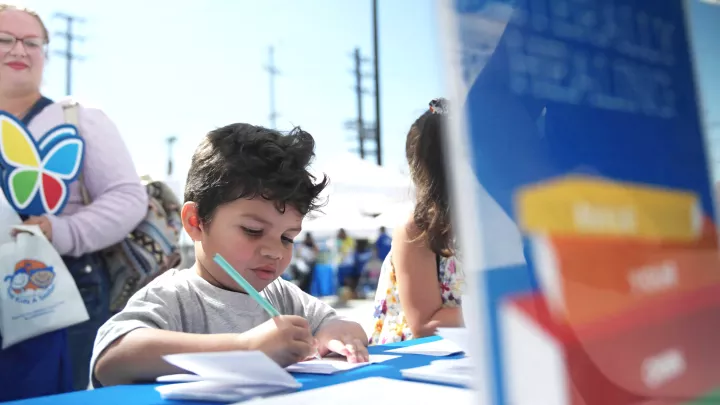Resources for Health Care Providers
The Pediatric Disaster Resource and Training Center has focused extensively on preparing hospitals, clinicians and EMS providers for children’s needs in a disaster. Below are some resources to help you plan, train and respond.
Pediatric Decontamination
This guide illustrates the steps required for decontamination after a chemical, radiological, or nuclear incident. The guide contains pictures and simple instructions in 6 different languages which will help health care workers communicate with children and non-verbal individuals.
Pediatric Surge Planning
The pediatric surge plan was designed to create a county-wide plan for how each hospital in L.A. County will contribute to caring for children in the event of a surge that largely impacts children.
- L.A. County Pediatric Surge Plan
- Pediatric Surge Quick Reference Guide
- Los Angeles County Emergency Medical Services (LAC EMS) Agency
- LAC DPH Surge Guide -- The L.A. County Department of Public Health produced this guide in cooperation with Children’s Hospital Los Angeles and the L.A. County EMS Agency. The guide provides pediatric-specific clinical values and drug dosing, among other pediatric values and references.
Family Reunification
Over 160,000 children were separated from their families during Hurricane Katrina, and it took more than 6 months for the last ones to be reunited. Los Angeles County has invested in a system called ReddiNet to support victim tracking and family reunification. Find out more about Reddinet.
- L.A. County Family Assistance Plan
- L.A. County Family Information Center Planning Guide
- Pediatric Reunification: National Consensus Conference Recommendations (2008)
Resources to Help You Train
The Pediatric Disaster Resource and Training Center has developed training tools with the goal of providing pediatric-specific disaster information to health care workers.
Surge World
SurgeWorld is a simulation game developed by Children’s Hospital Los Angeles that allows users to experience a hospital surge of pediatric patients. Users are required to triage arriving patients using a pediatric triage method called JumpSTART.
As patients are triaged, users additionally manage the different care areas by re-assessing patients as needed and monitoring pharmaceutical, supply and staffing levels. Each simulation enhances the user’s decision making for dealing with a surge of patients—one of the critical skills needed during a disaster situation.
Disaster Olympix
CHLA created the Disaster Olympix as a hands-on exercise to challenge individuals in critical thinking, teamwork and communication. This just-in-time training scenario was recognized by The Joint Commission as a “best practice” in 2012.
The exercise aims to raise awareness of potential disaster-related issues, and to ensure that staff members are prepared to jump in and utilize every asset to provide safe, timely assistance in the case of a major event.
At CHLA, we create a series of real-world events that hospital workers may encounter during disasters. Teams of five individuals are challenged in each activity and have a set goal to achieve with each scenario.
If you are interested in creating your own Disaster Olympix, please email us at EmergencyManagement@chla.usc.edu.
Disaster Research
The Pediatric Disaster Resource and Training Center has conducted research on many issues impacting children as a result of disasters. We partner with other institutions to answer questions related to our field.
Review our publications here. You can also find abstracts and publications on PubMed.


